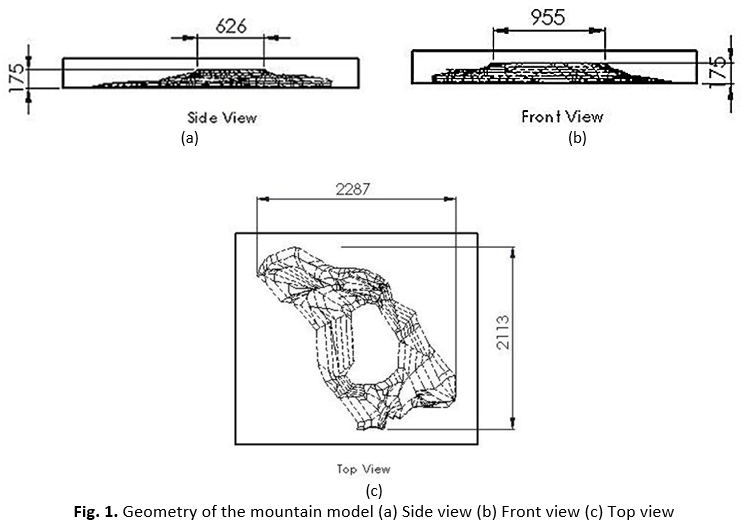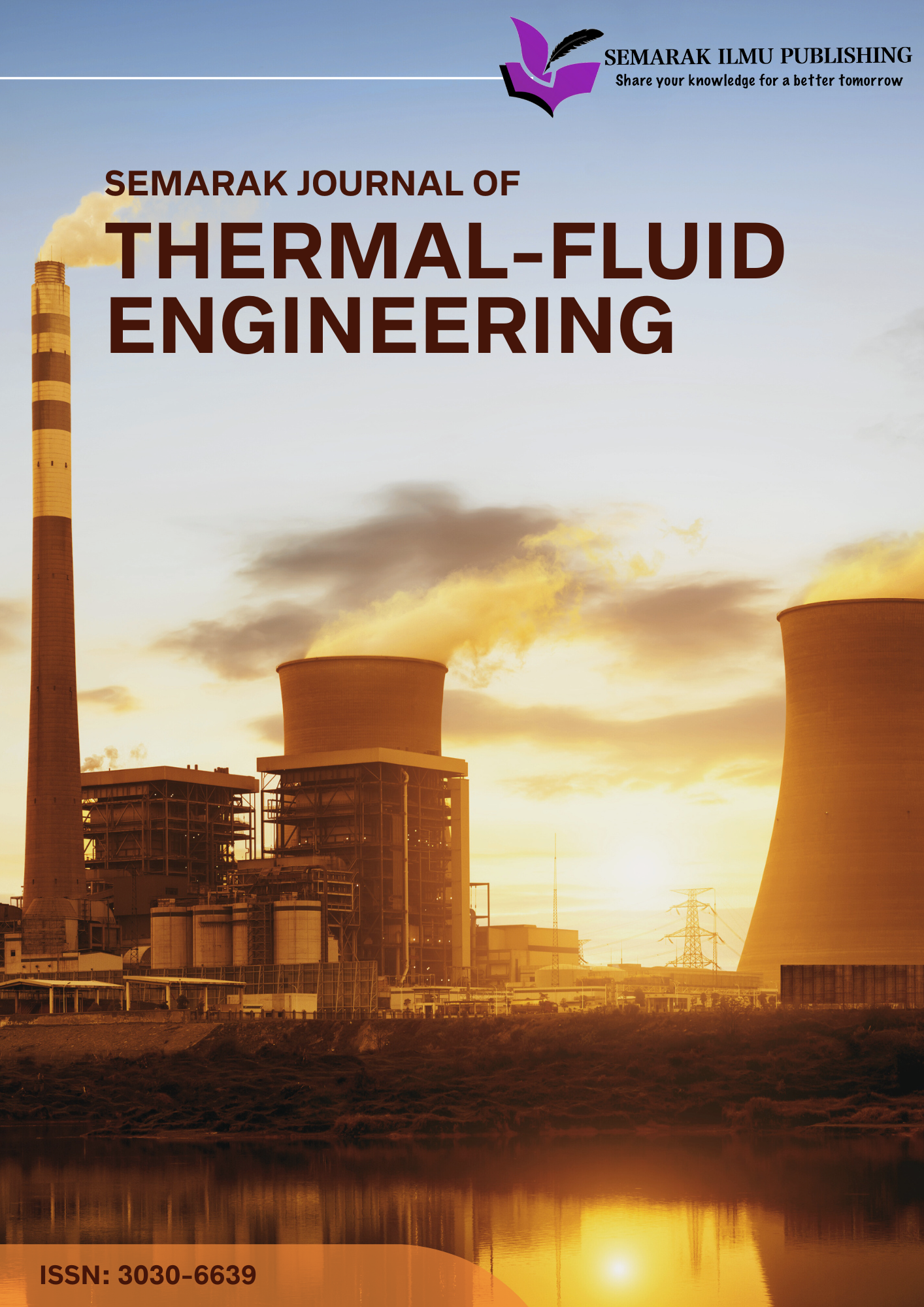Modeling of the External Airflow in Mountain with Different Velocity and Turbulence Models
DOI:
https://doi.org/10.37934/sjotfe.5.1.3645aKeywords:
External airflow, heat transfer, wind velocity, turbulence model, mountain terrain, computational fluid dynamicsAbstract
This study investigates external airflow and heat transfer over mountainous terrain using computational fluid dynamics (CFD) simulations, considering varying wind velocities and turbulence models. The research incorporates boundary conditions with wind velocities of 50 m/s, 100 m/s, and 150 m/s while implementing turbulence models such as k-epsilon, k-omega SST, and k-kl-omega. A computational domain replicating real-world topographical features with high-resolution meshing ensures accurate simulations. The study evaluates airflow separation, turbulence formation, and heat dissipation across the mountain surface. Results indicate that at low wind velocities, heat remains concentrated near the surface, whereas higher velocities enhance convective effects, improving heat dissipation and reducing surface temperatures. Among turbulence models, the k-omega SST and k-kl-omega models exhibited superior accuracy in predicting temperature gradients. The lowest recorded surface temperature was 25.2256°C for the k-kl-omega model at 150 m/s, demonstrating efficient cooling effects. The study also conducted a Grid Independence Test, confirming that an optimal element size of 40 mm provided the most reliable results, with an average mountain surface temperature of 1200.02°C, ensuring accurate modeling of wind interactions. Additionally, the airflow behavior was analyzed to assess turbulence intensity, recirculation zones, and pressure variations, which are critical for wind energy optimization and infrastructure planning. These findings highlight the importance of selecting appropriate turbulence models and boundary conditions for improving wind farm efficiency, environmental monitoring, and climate adaptation strategies. CFD proves to be a valuable tool for predicting complex airflow behaviors in mountainous terrains, aiding in sustainable energy solutions and thermal management. The study concludes that precise modeling of external airflow enhances the understanding of aerodynamic and thermal interactions, supporting renewable energy applications and infrastructure development in complex terrains.









